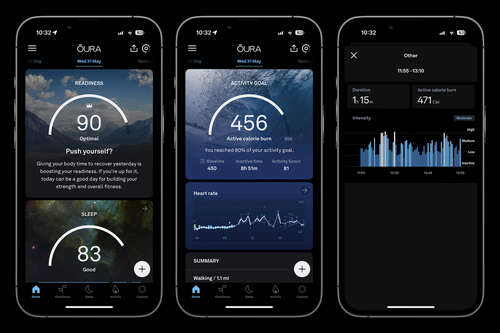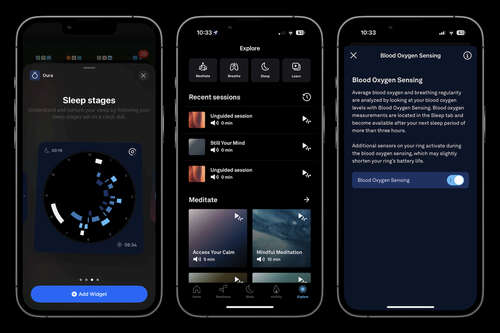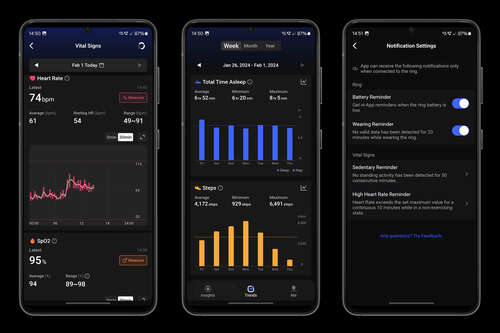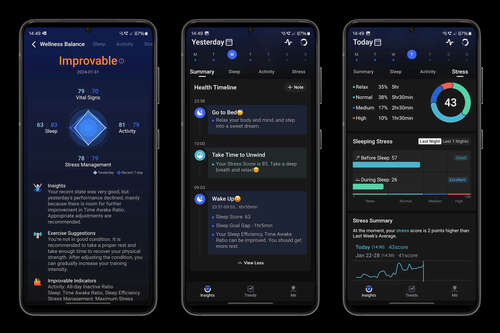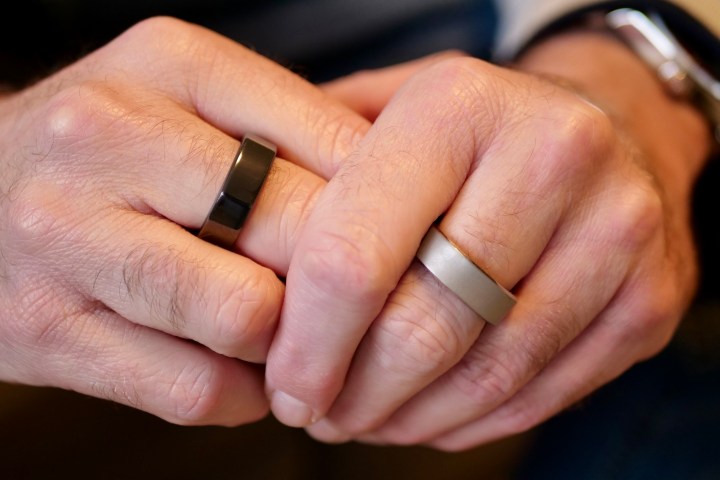
The Oura Ring doesn’t have the smart ring market to itself anymore, and the latest challenger is the RingConn Smart Ring. It’s the same basic concept as the Oura Ring, but there are some key differences. The RingConn Smart Ring is not only cheaper, but it also doesn’t have a monthly subscription attached to it, making it more financially tempting.
I’ve been wearing the Oura Ring for several years now and have had the RingConn Smart Ring on the middle finger of my other hand for a few weeks, helping me understand whether it’s a true alternative to the Oura Ring. If you’re considering buying one of these smart rings, there are some important differences to understand, and it does make one a better buy than the other.
Which smart ring is more comfortable?
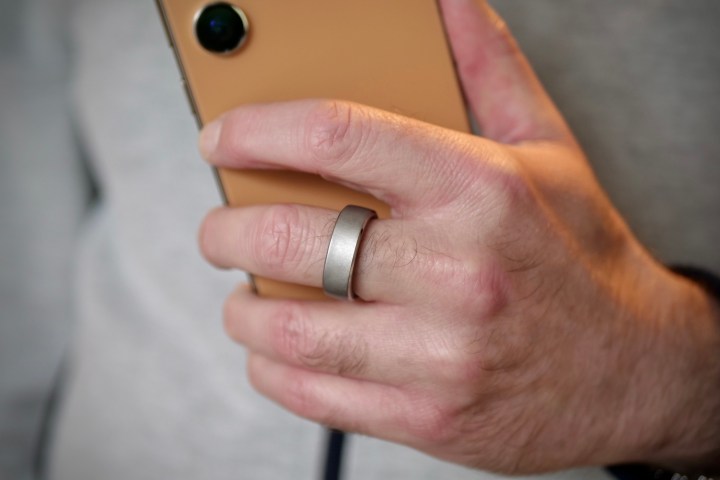
The Oura Ring and RingConn Smart Ring are both very comfortable to wear, they are very light, and also well made. The better way to describe the difference between them is which is more noticeable on your finger. Before answering that, let’s talk about the materials and shape.
The RingConn Smart Ring and the Oura Ring are made of titanium with a plastic inner section to allow the different sensors to collect data. Both my size 11 smart rings weigh the same at about 3 grams, but this may change if you get a larger size. Both are also approximately the same width and thickness but are slightly different shapes.
The Oura Ring and RingConn Smart Ring are both very comfortable to wear.
That’s right; despite being rings, the RingConn Smart Ring is shaped more like a squircle, unlike the entirely circular Oura Ring. Its sensors are housed in two tiny nubbins and a flat section on the inside of the ring, while the Oura Ring simply has three nubbins. The squircle shape is well suited to a ring, especially if you’re not used to wearing one, and I haven’t noticed any negative difference in the way either feels on my fingers due to the shape or sensor array.
However, this doesn’t mean one isn’t less noticeable than the other. The Oura Ring’s shape is ever-so-slightly more curved, with less of a sharp edge than the RingConn Smart Ring’s neatly chamfered, polished edge. I find the Oura Ring is quickly ignored, but I am more aware of the RingConn Smart Ring being on my finger. The Oura Ring’s shiny finish is also less noticeable between my fingers than the RingConn’s matte textured finish.
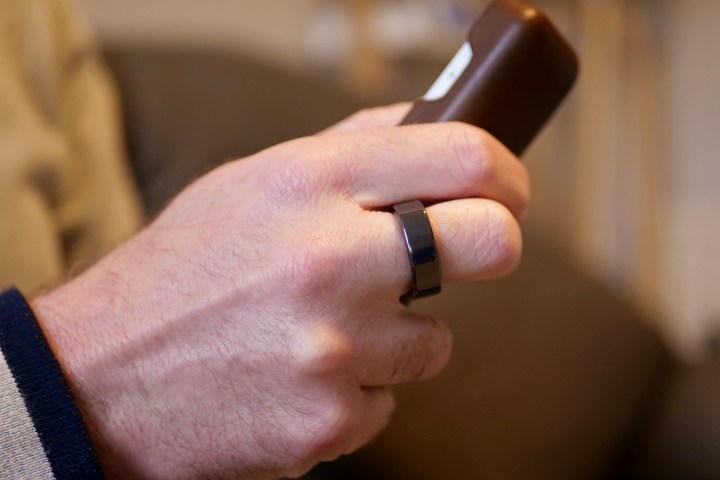
The RingConn Smart Ring is less noticeable than the Ultrahuman Ring Air, but it’s not quite as invisible as the excellent Oura Ring. I really like their designs, and they make a stylish, luxurious, yet subtle statement on your finger. The RingConn Smart Ring is a little more flashy with its dual polished and matte finish, particularly next to the darker Oura Ring, but neither has an overtly techy look, unlike a touchscreen smartwatch.
I’d recommend getting a sizing kit before buying either smart ring, as despite both of mine being the same size 11, the RingConn Smart Ring turned out to fit slightly larger than my Oura Ring. There are three colors available for the RingConn Smart Ring: Moonlit Silver (seen in our photos), Midnight Black, and Pale Gold. There’s more choice from Oura, with the Ring available in several finishes and in two different designs — Heritage and Horizon.
Which is best for sleep tracking?
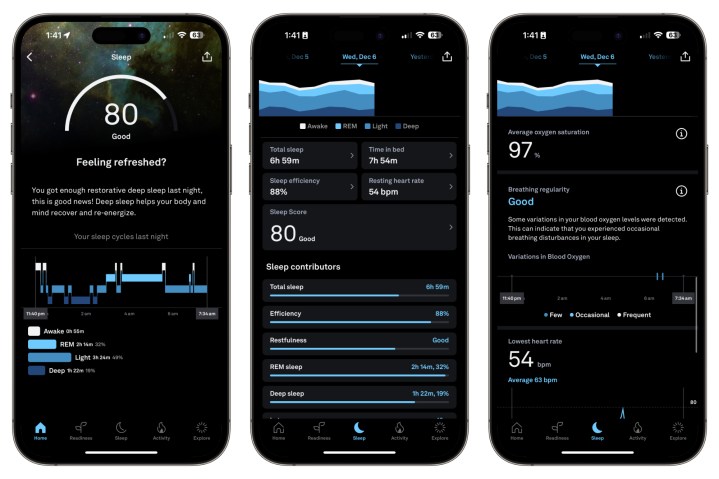
Smart rings make great sleep-tracking devices, as they are low maintenance, easy to wear, and unobtrusive. Both the Oura and the RingConn focus on sleep and use data collected to inform you about your overall health and well-being. Both smart rings provide sleep time, sleep stage data, heart rate, heart rate variability (HRV), blood oxygen levels, and skin temperature data. In the morning, both present an overall sleep score and efficiency rating.
For the most part, the two smart rings are consistent with each other’s results, but there are small differences. The RingConn Smart Ring usually records a lower blood oxygen (Sp02) average overnight than the Oura Ring (likely because mine is a bit too large) and a higher average heart rate and HRV than the Oura Ring too.
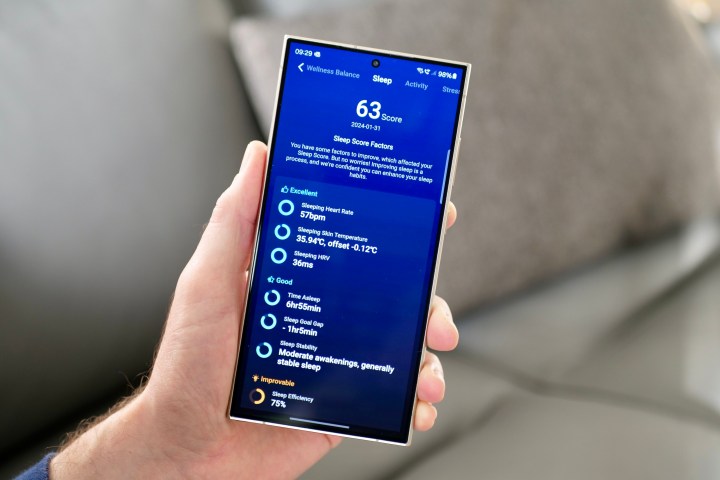
It’s fairly similar when it comes to sleep stages but will vary in the amount of light sleep recorded. The Oura Ring’s sleep algorithms were updated in mid-2023, and improved accuracy was a big part of the update, so I’d be more inclined to trust the Oura Ring when it comes to sleep stage timing.
That said, it’s difficult to call one more accurate than the other, as neither are medical devices. There was never a massive deviation that made me think one was drastically over or underestimating my sleep, though. The RingConn recognized when I slept badly, just like the Oura Ring, and while the scores and numbers related to it were slightly different, they never painted a totally different picture. I have been confident in both when it comes to understanding my sleep.
Which is best for fitness tracking?
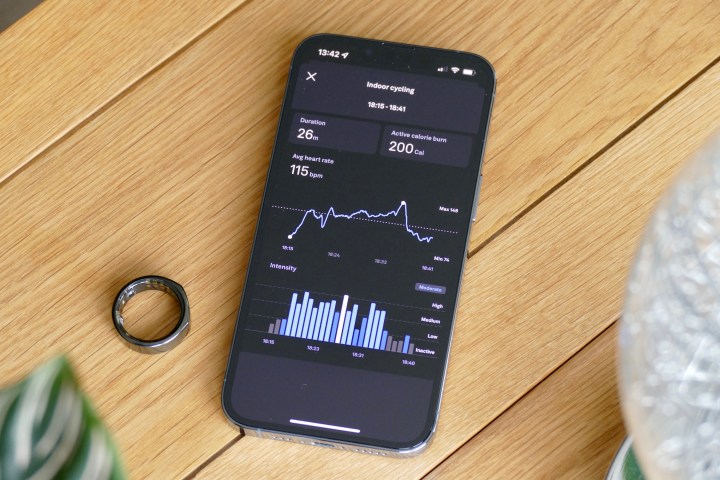
If you want to track specific activities, such as walking or cycling, and to have your smart ring automatically recognize when you’ve been exercising, then the Oura Ring is the only choice between the two. The RingConn Smart Ring does not have any fitness tracking at the moment. Although the feature is promised in a software update coming soon, we do not suggest buying any product based on what it may do in the future.
However, the Oura Ring is still quite limited in what it can track. There are several workout modes, but these are focused on walking, running, and cycling. There’s no general gym workout mode, for example. You can manually add in workouts, but this is more effort than other wearables require, and if you want comprehensive fitness and workout tracking, it’s definitely better to look at a smartwatch or a Fitbit.
The Oura Ring has an effective automatic workout recognition mode, and it even includes activities like housework. These show up in the app and require manual confirmation before they are added to your daily scores. The Oura Ring’s basic activity tracking is adequate, and it’s certainly the smart ring to choose over the RingConn Smart Ring for activity tracking. But if you’re an athlete or want motivation, plus in-depth workout data for a variety of activities, you should look at a different wearable altogether.
Which app is better?
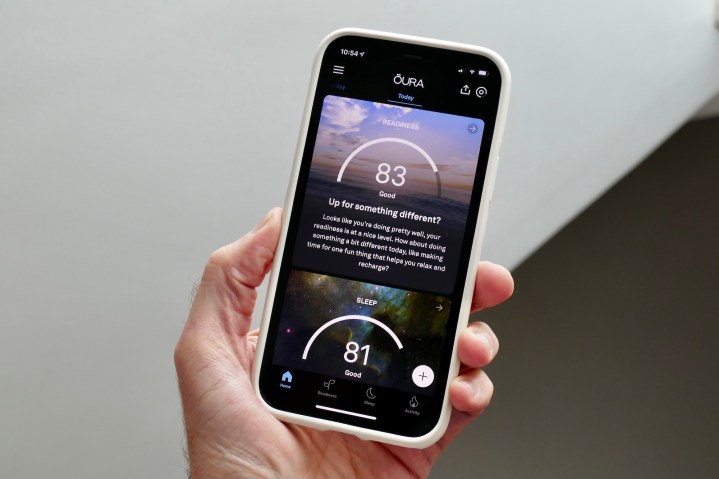
To assess which app is better, I will concentrate on the design, data presentation, and the amount of advice provided. The Oura app has a cleaner, easier-to-understand design, while the RingConn app packs more data into smaller spaces, making it appear more cluttered. If you want at-a-glance information, Oura’s simple system of swiping to see Readiness, Sleep, and Activity scores is quick to navigate, and more data is found by swiping down on each screen.
The RingConn app works in a similar way, but the Summary page is more data-intensive. It does provide an interesting graph called Wellness Balance, which displays your scores in a simple-to-understand way and gives you a one-word overview of your performance. The difference is that RingConn’s app uses a much smaller font size, and all the numbers displayed can look overwhelming compared to the Oura app.
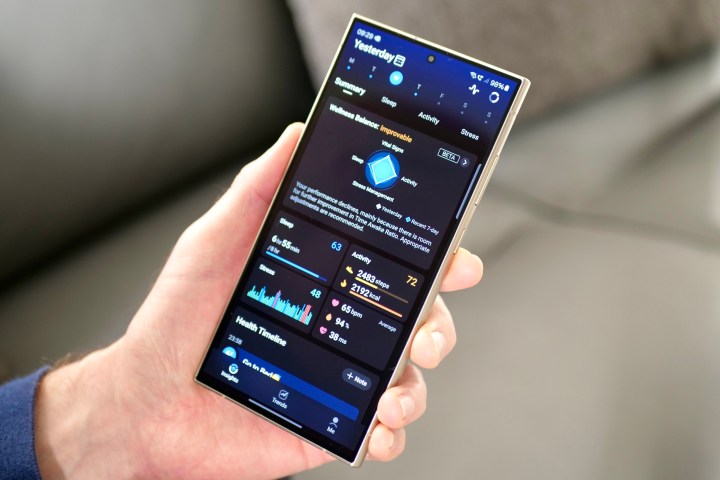
The main Summary page has a Health Timeline section, which lacks helpful information. In addition to the Insights panel, the RingConn app has separate screens for historical data and general settings. It’s quite basic, but all of the expected information is there. I like the handy icon showing the amount of battery life remaining in the smart ring, which is present at the top of each screen. Tap it, and you can quickly access all the ring’s settings and some helpful documentation.
In the Oura app there’s a lot of additional information, including easy to find and understand trends, information on stress levels, sleep chronotypes, and most recently a metric called Resilience, which shows how your body is coping with stress and recovery. There’s also a host of mindfulness exercises and compatibility with other apps, including Natural Cycles, Apple Health, Google Fit, and Strava. The RingConn app also links to Apple Health and Google Fit, but nothing else, and the app is harder to navigate with its unfriendly pages of options scattered around.
You don’t get deep insights or clear motivation from either product. Both will send movement reminders, although I haven’t found RingConn’s notifications to be very reliable. Neither push you to exercise or to meet certain goals, so if you would prefer not to be constantly nudged to do more, either smart ring will suit you. I do prefer the Oura Ring’s use of language, though, as it’s always obvious when it thinks you’re ready for more or should take it easy. The RingConn does say basically the same things, but with smaller, more hidden text.
You pay a monthly subscription to access Oura’s app, but the design and interface are superior to RingConn’s app. However, I’m not sure if that’s enough justification on its own, as RingConn’s app is still informative and easy to use. It’s also more user-friendly than the app for the Ultrahuman Ring Air. I hold the Oura Ring app up as a great example of how to do wearable apps right, but the RingConn app isn’t that far behind. It’s just considerably more generic.
Which smart ring has better battery life?
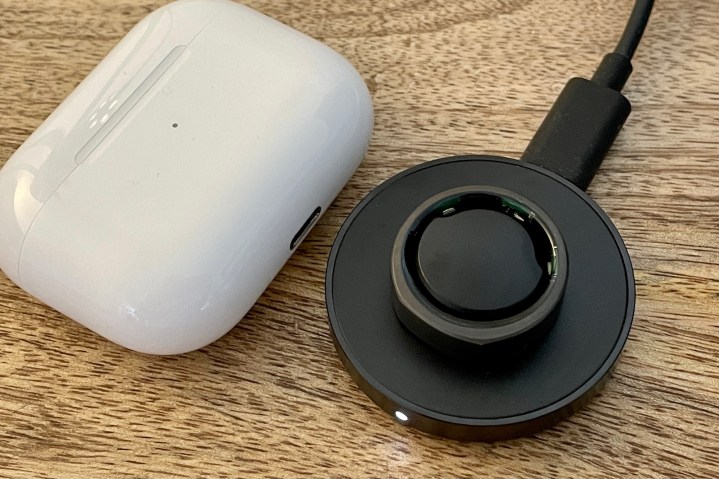
The Oura Ring’s battery lasts five to seven days on a single charge, depending on your activity. The more you use the Oura Ring’s workout tracking features with GPS, the closer it gets to around five days of use. The RingConn’s battery has lasted a little longer, getting close to seven days on a single charge. However, the smart ring does not measure any workout activity at all, so it’s under less stress in general.
The RingConn Smart Ring comes with a travel case that has a built-in battery, and you use this to charge up the ring. When the travel case’s battery has been depleted, it’s charged using a USB-C cable. It’s a convenient way to charge the smart ring, holds multiple charges, and is helpful if you do intend to travel around. Plus, it is also somewhere to keep the ring safe. The Oura Ring comes with a simple charging plinth.
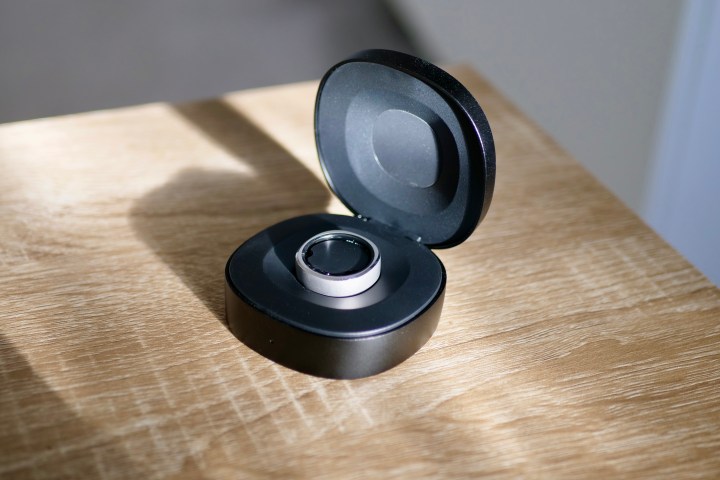
I’ve found the best way to keep a smart ring charged is to simply put it on its plinth or inside the case when you shower in the morning. After this, and getting ready in the morning, both smart rings have sufficient charge, so a dedicated full charge is almost never required. Living with a smart ring is very easy when you remember to charge them like this.
Which smart ring is more expensive?
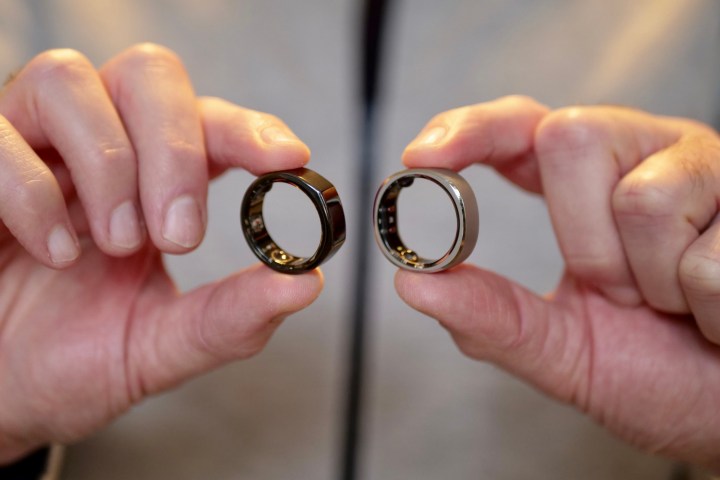
The Oura Ring is more expensive than the RingConn Smart Ring, but before we look at the costs involved, remember the Oura Ring is more feature-rich than the RingConn Smart Ring, so you are getting more for your money.
The RingConn Smart Ring costs $279 regardless of which finish you choose, and the app does not have a subscription at the moment either, so you pay one price and that’s the end of it. That’s not the case with the Oura Ring. It starts at $299, but if you want a flashier version like the brushed titanium Horizon design, it’ll cost $449, for example.
However, the cost doesn’t stop there; while the first month is free, access to the app and all its data costs $6 per month afterward. If you don’t pay, you only get the three Readiness, Sleep, and Activity scores with no insight or data breakdown. The Oura Ring will cost $365 for the first year if you choose the least expensive version and then $72 per year afterward.
Should you buy the Oura Ring or the RingConn Smart Ring?
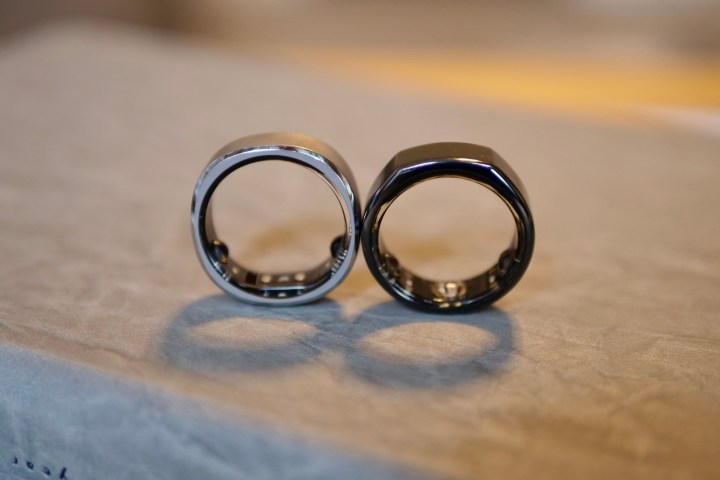
Deciding which smart ring is best for you is a hard decision. Financially, the RingConn Smart Ring is much cheaper than the Oura Ring but also does less. The Oura Ring costs more, but it has many additional features, so it will be more useful. The app is beautifully designed and quite informative. However, you must continue to pay for it, and you don’t have to with the RingConn Smart Ring.
If you are only interested in tracking sleep, the RingConn Smart Ring will probably be all you need, but if you’d like to track a few workouts and other activities, the Oura Ring is the better choice. Because the Oura Ring looks at activity, too, I think its data is more informative, and you get a better overview of your health. RingConn says it will add activity tracking in the future, but it’s not available yet.
I will be watching to see how the RingConn Smart Ring’s feature list improves
The RingConn Smart Ring feels quite basic, while the Oura Ring is a more rounded, feature-rich product. And even though it costs more, it will be more helpful and informative, plus more useful to you right now. The cheaper RingConn Smart Ring may still be right for you, though, particularly if you pair it with a smartwatch that you don’t want to wear overnight, giving you all the missing fitness features and a whole lot more. However, the Oura Ring can take the place of a smartwatch — but only just — provided you aren’t a serious athlete and want in-depth activity tracking or require notifications.
For me, I will stick with the Oura Ring for now, as it does everything I want in a wonderfully neat and friendly way, and I still love the design and the way it feels. It’s a true luxury tech product. I will be watching to see how the RingConn Smart Ring’s feature list improves, as it does have the potential to challenge the Oura Ring more effectively in the future. If you’re interested in how the Oura Ring compares to the Ultrahuman Ring Air, we’ve got you covered there, too.
Editors’ Recommendations
